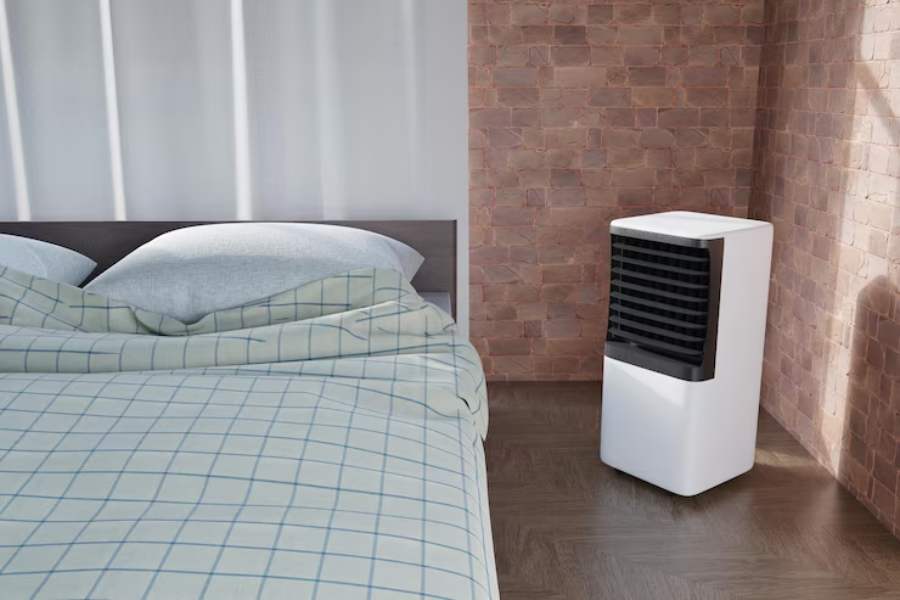
As temperatures climb and summer heat intensifies, many homeowners find themselves seeking relief without breaking the bank on expensive cooling solutions. The good news is that you don’t need to invest in costly central air conditioning systems to keep your home comfortable during the hottest months of the year. With some strategic upgrades and simple modifications, you can significantly improve your home’s cooling efficiency while keeping energy costs manageable.
Ceiling Fans: The Overlooked Cooling Champions
One of the most cost-effective cooling solutions remains the humble ceiling fan. Modern ceiling fans use minimal electricity while providing immediate cooling relief through air circulation. When choosing gold ceiling fans, you’re not only adding an elegant design element to your room but also investing in a practical cooling solution that can reduce your reliance on air conditioning.
The key to maximizing ceiling fan efficiency lies in proper installation and usage. Ensure your fan rotates counterclockwise during summer months to create a direct downdraft that produces a wind-chill effect on skin. This simple adjustment can make a room feel up to 4 degrees cooler without actually changing the temperature. For optimal performance, install fans 8-9 feet above the floor and ensure blades are at least 10-12 inches below the ceiling.
Window Treatments That Beat the Heat
Your windows are likely the primary source of unwanted heat gain in summer. Investing in thermal curtains, cellular shades, or reflective window film can dramatically reduce solar heat infiltration without expensive renovations.
Cellular (or honeycomb) shades create insulating air pockets that block heat transfer through windows. These shades can reduce heat gain by up to 60% when properly installed and are available in various price points to suit different budgets. For even greater effectiveness, look for versions with reflective backing designed specifically for heat reduction.
Reflective window films offer another affordable option, blocking up to 85% of solar heat while still allowing natural light to enter. Modern variants no longer darken rooms significantly and can be either professionally installed or applied as a DIY project, making them accessible to renters and homeowners alike.
Ventilation Improvements
Creating effective cross-ventilation can dramatically improve comfort without mechanical cooling. Start by identifying your home’s natural airflow patterns and enhancing them with strategically placed box fans or tower fans.
For maximum effectiveness, try the “chimney effect” technique: place fans in upper-story windows blowing outward while opening lower-level windows on the cooler, shaded side of your home. This creates a natural draft that pulls hot air up and out while drawing cooler air in from below.
For homes with attics, proper ventilation becomes even more crucial. Consider installing an attic fan or passive vents to prevent the buildup of super-heated air that can radiate downward into living spaces. Solar-powered attic fans offer an especially eco-friendly solution, using the same sun that heats your attic to power its own cooling.
DIY Evaporative Cooling Solutions
Evaporative cooling harnesses the cooling effect of evaporating water and works especially well in dry climates. While commercial evaporative coolers (swamp coolers) are one option, you can create simple DIY versions for specific areas of your home.
A bowl of ice placed in front of a fan creates an immediate cooling zone as air passes over the ice and carries chilled moisture into the room. For a more sophisticated approach, dampen a sheet and hang it in front of an open window with a fan behind it—as air passes through the damp fabric, evaporative cooling occurs, potentially lowering incoming air temperature by several degrees.
Smart Thermostat: A Worthwhile Investment
While not the least expensive upgrade on our list, a programmable or smart thermostat typically pays for itself within 1-2 years through energy savings. These devices prevent wasteful cooling when you’re away or asleep by automatically adjusting temperature settings according to your schedule and preferences.
Many utility companies now offer rebates for smart thermostat installation, making them even more affordable. Look for models that learn your patterns and offer remote access via smartphone apps, allowing you to adjust settings on the go if your plans change unexpectedly.
Sealing and Insulation Improvements
Cool air escaping and hot air infiltrating through cracks and gaps around doors, windows, and other openings can significantly reduce your cooling efficiency. Weatherstripping, door sweeps, and caulking represent minimal investments that yield substantial returns in comfort and reduced energy costs.
For a more comprehensive approach, consider adding insulation to your attic floor. Since heat rises, preventing its transfer from your attic to living spaces below is crucial for summer comfort. Many utilities offer free energy audits that can identify specific areas where insulation would most benefit your home.
Cooling Your Personal Space
Sometimes cooling your person rather than your entire home is the most efficient approach. Personal cooling products have advanced significantly in recent years, with options ranging from cooling towels and mattress pads to small personal fans that connect to your smartphone.
For nighttime comfort, consider switching to breathable, moisture-wicking bedding made from natural fibers like cotton or bamboo. Cooling pillows filled with gel or other temperature-regulating materials can also significantly improve sleep quality during hot weather without affecting your energy bill.
Landscaping for Natural Cooling
Landscaping provides natural cooling benefits that increase over time. Planting deciduous trees on the south and west sides of your home can reduce summer temperatures by up to 6 degrees while allowing warming sunlight to reach your home in winter when leaves have fallen.
For immediate benefits, consider installing trellises with fast-growing vines like morning glory or grape outside windows that receive direct sun. Container gardens on patios and balconies can also create cooling microclimates through plant transpiration.
Creating a comfortable summer environment doesn’t require expensive system overhauls or budget-busting installations. By implementing several of these affordable cooling strategies, you can significantly improve your home’s comfort while keeping energy costs under control. Start with the solutions that address your specific home’s challenges, then gradually add others as your budget allows. With thoughtful improvements and smart usage patterns, you can enjoy a cool, comfortable home even as summer temperatures soar.








